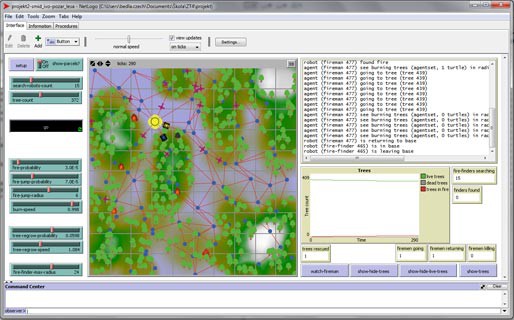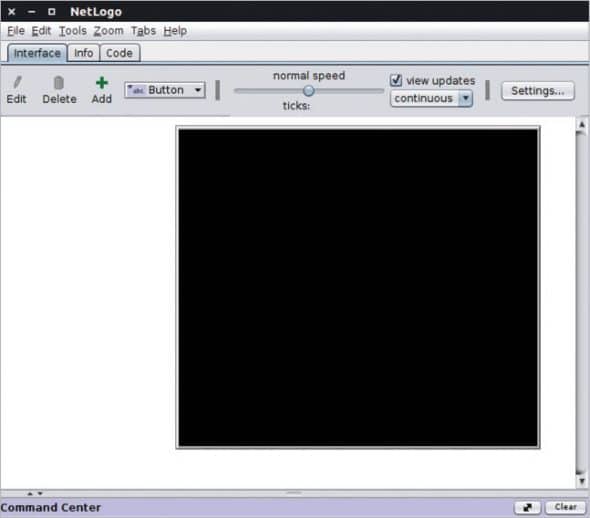
Participatory simulations are similar to multi-agent simulation except individuals play the role of virtual agents, sometimes in combination with these virtual agents. Multi-agent simulation is a powerful technique used to encode real-world simple rules in virtual agents and then simulate their interactions. The following will be a description of how this model operates along with suggestions as to how it might be set-up, modified or extended to better portray a particular market. It is certainly the goal of agent-based modelers in general that, given a sufficient set of agent rules, any complex system can be modeled or at least accurately mimicked. It is a ‘general purpose’ example of how an agent-based model can be used to investigate a complex problem such as the difficulty in the allocation of resources for exploration or exploitation. This model is not intended to represent any specific market or to validate any existing theory. Any created model can be easily distributed for use without the need of end-users downloading the NetLogo tool itself. It is Java based and thus takes advantage of the programming ease of an interpreted language and the speed of a compiled language.
#NETLOGO PDF FOR FREE#
The NetLogo agent-based modeling tool was chosen because it is easy to program, well documented and available for free download from. This feature coupled with any statistical package provides for a potentially extremely effective modeling technique for this very complex issue. The ‘Behavior Space’ feature of NetLogo allows the user to map performance and market share in space of all 16 control ‘dimensions’.

This simple agent-based model has 16 settable parameters. The agent-based model approach to the exploration / exploitation dilemma allows for a massively complex model to be developed through relatively simple programming. The NetLogo Exploration / Exploitation agent-based model has been designed for the observation of how different resource allocation strategies can affect performance and market share in differing consumer markets and competition environments. Using NetLogo software, this paper aims to disclose the result of an Agent Based Simulation model which showed when and why a person will or will not re-tweet a message that he/she received from his/her friends or social networks that he / she belongs to by applying the concept of Diffusion of Innovations. On the other hand, the independent and autonomous behavior of members in a social network such as Twitter satisfies the characteristics of Agent Based Simulation model. In the case of new product introduction using Twitter, an online survey has been conducted to obtain the factors which affect the decision and timing to retweet the message or not. There are some factors which affect the decision to retweet or not a message, besides the speed in forwarding the messages which believed to follow the Diffusion of Innovations model. Using Twitter, a person has the choice whether or not to forward (re-tweet) the message from/to his/her friends or social networks that he/she belongs to. Working very much the same as a blog, it has been used widely by businesses as well as individuals to share information, introduce new product/idea, etc. In less than 4 years since its introductions, Twitter has become the fastest growing social networking tool. The results show that our theoretical model can explain the case well and provide meaningful guidance to construct efficient organization system.KeywordsResource characteristicTransaction characteristicOrganization systemInstitutional efficiencyProduction and marketing mode Accordingly, this paper established an agriculture organization system decision model and applied it to agricultural industry of Laoshan district in Qingdao. Given that PMM are determined, organization system rests with institutional efficiency.

However, resource characteristic is also important for production and marketing modes.

Different transaction types correspond to different PMM. This paper derived eight types of transaction characteristics and four broad categories of PMM. R-release (arm64): RNetLogo_1.0-4.tgz, r-oldrel (arm64): RNetLogo_1.0-4.tgz, r-release (x86_64): RNetLogo_1.0-4.tgz, r-oldrel (x86_64): RNetLogo_1.0-4.AbstractThe purpose of this study is to explore the determinants of agriculture organization system and the relationships among resource characteristic, transaction characteristic, agriculture organization system and production and marketing mode (PMM). Mostly analogous to the 'NetLogo' 'Mathematica' Link. Provides functions to load models, execute commands, and get values from reporters. Interface to use and access Wilensky's 'NetLogo' (Wilensky 1999) from R using either headless (no GUI) or interactive GUI mode.

RNetLogo: Provides an Interface to the Agent-Based Modelling Platform


 0 kommentar(er)
0 kommentar(er)
